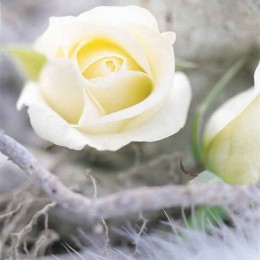
info about the flowers & plants association |
| the latest events in the flower world |
view the latest flower fashion trends |
green & gorgeous – boost your wellbeing with houseplants |
advice on where to buy & recommended retailers |
data & details about the flower industry |
how
to join and what benefits we can offer you as a member |
for
journalists & the media – what we can do for you |
index
of pages on this site to aid your navigation |
|
Rose
Name: Botanical name Rosa Origin: China and now cultivated from America to Africa and from Eastern Europe to the Far East. Colour: Available in every colour except blue and true black. Availability: All year round and probably the best known and best-loved flower in the world. Varieties: For extra scented roses, look for 'Sterling Star' (lilac), 'Jacaranda' (blue-pink), 'Osiana' (peach-cream), 'Sterling Silver' (lilac) and 'Extase' (deep red). Care Tips: Limp roses can be revived by standing up to their necks in lukewarm water in a cool room. Do not bash the stems as this prevents them taking up water effectively. Don't remove thorns unless for a hand-held posy, as these can cause wounds where bacteria can enter. They have a vase life of around a week but can last even longer. Trivia: Facts: In the 19th century old scented roses were used to make jelly. The red rose is the symbol of England and is worn on St George's Day. It is also the symbol of love and is hugely popular on St Valentine's Day, when roses make up the largest proportion of the £22 million spent on flowers in the UK on this day. Medicinal: The crusaders when defeated by Saladin in Jerusalem returned to the west with rose plants which were then cultivated by monks in their monastery gardens for their medicinal properties. Rose water was successfully used to cure all kinds of ailments, such as trembling, constipation, drunkenness, skin and throat infections and insomnia. There is some truth in this as we now know Rosa rugosa hips contain high levels of Vitamin C. Indeed, rosehip tea is often recommended in pregnancy. Rose oil can reduce high cholesterol levels. Roses are used in face toners and perfume and are one of the most effective anti-ageing ingredients. History: Not surprisingly the Rose has always featured strongly throughout history. > Click here for more information on the rose through the ages > Click here for more information on "black" roses
| |

|